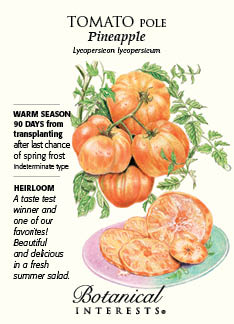Starting seeds indoors
 When starting seeds indoors timing is everything.Before you even begin making a good plan of what you want to plant and backing it up by creating a calendar will make the whole process way easier to implement and enjoy.
When starting seeds indoors timing is everything.Before you even begin making a good plan of what you want to plant and backing it up by creating a calendar will make the whole process way easier to implement and enjoy.
After you have chosen the coolest seeds to start indoors be sure to check the dates to maturity, you don’t want your seeds to germinate and grow quickly and then have it be to cold outside to transplant them in the garden. So count back from the time to plant outdoors and mark your calendar accordingly. It can be a simple sketch with dates off to the side or you can geek out on an elaborate program. Here a link to a seed starting chart to help you get started http://www.organicgardening.com/learn-and-grow/seed-starting-chart. And here is the farmers almanac – Best Spring dates for seeds http://www.almanac.com/gardening/planting-dates/OR/Portland
Now you are ready to plant.
Light is one of the most important elements in starting seeds indoors. Seedlings that don’t get enough light will be leggy and weak and likely only survive to about 3 inches tall and then shrivel. If you have a good southern facing window you may not need additional lighting but everyone else should consider using a grow light. Also, lights will fade over time so bulbs should be replaced annually for best results.
Temperature is also a factor, if seeds are too chilly they might not ever emerge let alone thrive. Seed starting heat mats are available commercially and while they can really help the process they are not completely necessary as long as you monitor the temp. Seeds placed right in a window may get to cold from the drafts. Check seed packages for specific temp and light requirements.
Soil is also a big consideration. A seed starting mix is best as it will be a very light composition of peat-lite and will be easy for tender young plants to push through. Seed starting mixes also usually contain a very mellow amount of fertilizer just right for young plants. Regular garden soil isn’t the best option as it will contain lots of organisms and bacteria that could harm new plants.
Containers should always be clean and sterilized before use. You can use last seasons plastic pots, pop out trays, flats or even used plastic food containers like yogurt or hummus tubs just be sure that there are holes in the bottom for good drainage. Peat pots are an easy way to go as they have a specially formulated seed composite and you can plop the whole thing in the garden when ready to transplant. You can also make paper pots yourself.
Fill container about three quarters full with your soil medium. Leave enough room at the top so water can fill and drain into the soil without running over the sides (this will help you be sure to water each pot evenly) Check the seed package for desired depth.
Water is essential when starting seeds. Make sure the soil in your containers is quite moist all the way to the bottom. Invisible dry pockets can form under the surface of new soil so its easier to pre – mix the soil with water in a bowl before filling containers. You don’t want the soil to be soggy but you also don’t want it to be at all dry. Take a clump up in your hands and lightly squeeze to remove any dripping excess before filling. Check moisture frequently and don’t let them dry out at all, a plastic or glass cover helps keep the moisture in.
Seedlings cannot be allowed to dry out but they are also very sensitive to damping off, a fungal disease which can become a problem if the soil is too wet. Keep your pots moist but never soggy and remove coverings once the seedlings begin to develop. Another thing that can help is to put a very small oscillating fan on the seedlings. This will keep air flow moving around the seeds and also forces the little plants to develop strong stalks but it can also dry them out so watch the water! Misters can supply just the right amount of water to the soil but you don’t want to leave leaves to wet and susceptible to fungal disease.
Hardening off is so important! Tender seedlings need time to adjust from perfect indoor to harsh outdoor conditions. Place seedlings in a protected outdoor location. You want to shelter them from winds hard rains and especially direct sunlight which can burn them. Start out with an hour or so a day and gradually work up to more time each day. A week generally gives them the right amount of time to adjust before being planted directly outdoors.
Fertilizers should be used cautiously in the beginning. You new plants need food to grow but too much can do more harm than good. There are some great seedling fertilizer mixes available just follow the directions and enjoy all those new baby plants for the garden.